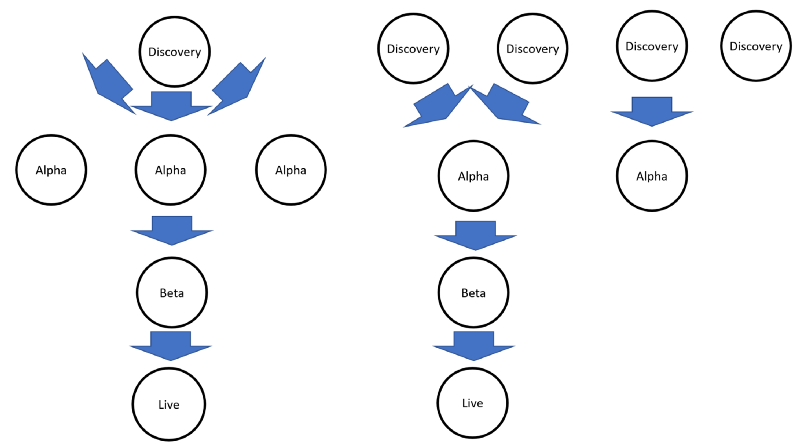Pairing for Product Managers
An interesting post from Anne Thomas on what it’s like to do ‘pair product management’:
I recently had the chance to pair with another Pivotal product manager on a more extensive basis. I also got a chance to speak with other PMs at Pivotal about their experiences “pair PMing”. As it turns out, a lot of the benefits we see from pair programming also apply to pair PMing.
I often spend time thinking over a problem or coming up with a new development idea, but as soon as someone else looks at it they spot things I hadn’t thought of. Sometimes even just the act of speaking my own thoughts aloud to someone else makes me realise there are pieces missing. Pairing with another person on this thought process can help avoid these situations.
The problem with pairing is obvious: it’s expensive. It is hard to justify having 2x the people working on 1x the projects. The counter argument is that you will get much higher quality output, but admitting that quality would be significantly higher if you paired can feel like admitting that you’re not good enough on your own.
An extremely helpful and relatively lightweight scenario to pair as a PM is when it comes to prioritising - either features ready to build or problems you haven’t started tackling yet. Having to justify to someone out loud why one thing is more important than another can remove hidden (or even acknowledged) biases, like prioritising a bug because you were the one that reported it, or picking a project because you know it will be fun.
In ‘Turn the Ship Around!’, one of David Marquet’s key discoveries was that his submarine crew made significantly higher quality decisions when they had to speak their actions aloud before proceeding, because it forced them to be conscious and deliberate in their choices. Product development is only marginally less complex and dangerous than nuclear submarine operation, so it's probably worth product managers trying this too.
